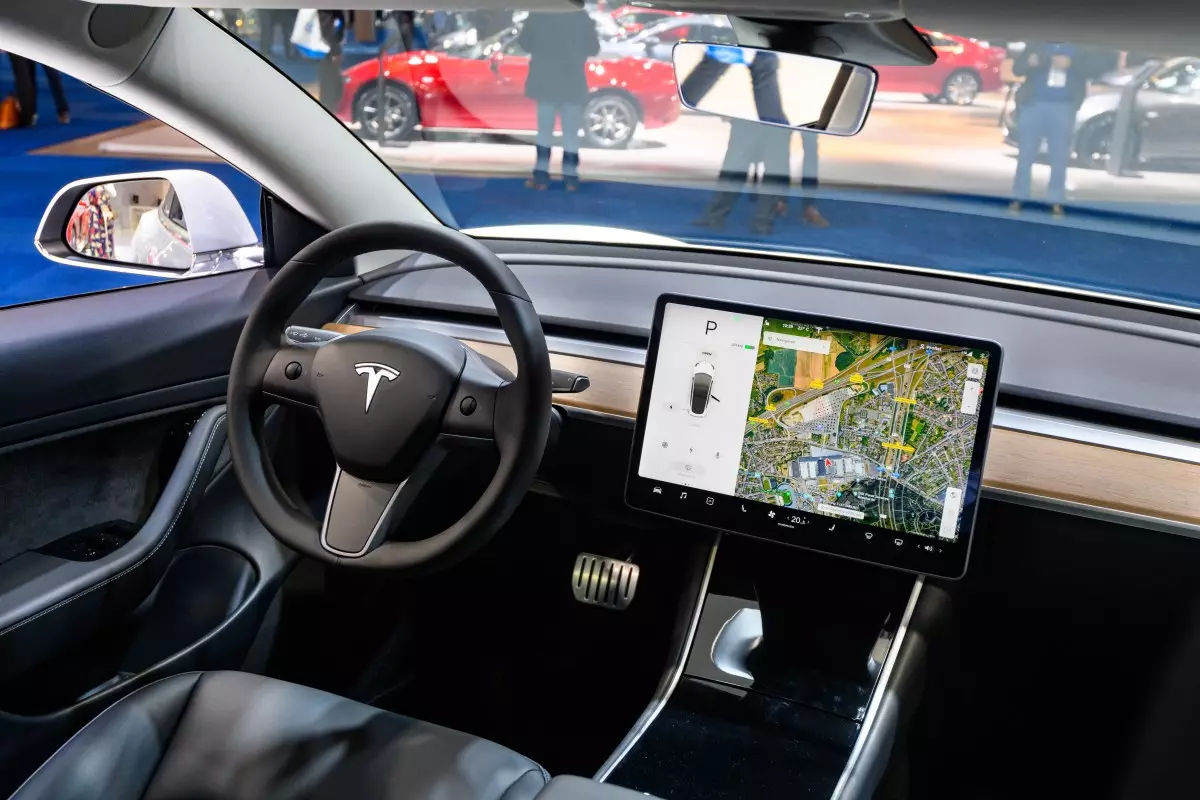The realm of autonomous vehicles is rapidly evolving, and at the forefront of this technological revolution is Tesla, led by its enigmatic CEO Elon Musk. Recently, Musk made waves by announcing Tesla’s intentions to roll out an “unsupervised” version of its Full Self-Driving (FSD) software in 2025, specifically for select Model 3 and Model Y vehicles in Texas and California. Furthermore, he hinted at the commencement of production for Tesla’s robotaxis, which will lack traditional controls such as steering wheels and pedals, by 2026 or 2027. However, while the enthusiasm surrounding these announcements is palpable, the undercurrents of skepticism regarding Musk’s timelines suggest a more nuanced reality that must be explored.
Musk’s proclamation raises critical questions about the nature of the upcoming FSD version. Currently, while Tesla’s FSD can handle a range of automated driving tasks, it cannot operate independently without human oversight, which is reflected in the recent rebranding from “FSD Beta” to “FSD Supervised.” This change highlights the necessity for human drivers to remain vigilant, ready to intervene if required. The terms “unsupervised” could imply either a fully autonomous Level 4 system, which functions seamlessly under set conditions, or a Level 3 system that occasionally requires driver intervention.
The distinction is crucial; if Tesla aims for a truly driverless operation, it will need to navigate a myriad of regulatory standards that govern autonomous vehicles. Current classifications necessitate permits for different operational capabilities, making clarity on the level of autonomy Tesla aims for essential, particularly given the precarious nature of Musk’s previous claims about autonomous technology timelines.
Regulatory Landscape: A Complicated Journey
Navigating the regulatory environment is one of the most formidable challenges that Tesla will face in its quest for unsupervised FSD. In Texas, the regulatory framework appears more lenient compared to California, where the Department of Motor Vehicles (DMV) enforces strict guidelines. As detailed in Musk’s announcement, Texas allows autonomous vehicles to operate without a human driver as long as they adhere to motor vehicle laws and meet specific technical requirements. Conversely, California’s regulations are more complex, necessitating various permits for different stages of autonomous vehicle operation, including testing and deployment.
Tesla currently holds a drivered testing permit in California, allowing it to conduct trials with a safety driver present. However, it has yet to apply for a driverless testing permit, which would be essential for deploying fully automated services commercially. Additionally, should Tesla plan to enter the ride-hailing market, the company would need to secure permission from the California Public Utilities Commission (CPUC), further complicating matters.
Comparisons with Other Automakers
In the competitive landscape of autonomous driving, Tesla is not alone in its pursuit of innovation. Mercedes-Benz has successfully obtained a permit to operate its Level 3 Drive Pilot system in California under strict conditions. This leads to a natural comparison: if Mercedes can navigate the regulatory maze to achieve limited autonomy, can Tesla do the same? Given Musk’s historical challenges with adhering to timelines, combined with the regulatory hurdles and the technical realities of the intended robotaxi design, these comparisons will only grow more significant over time.
The ambitious timeline of producing robotaxis devoid of human controls stands on shaky ground, especially considering Tesla’s previous assertions about achieving full autonomy. The lack of a driver’s wheel or pedal in these vehicles poses significant questions about safety compliance; would Tesla seek exemptions from federal motor vehicle safety standards? The National Highway Traffic Safety Administration (NHTSA) has yet to see a formal request in this regard, directing one’s thoughts to the broader implications of mass-producing such vehicles without the necessary regulatory endorsements.
Musk’s recent unveiling has left investors cautious, underscoring the broader concern regarding the feasibility of his declarations. The lack of clarity surrounding the advancement of Tesla’s FSD technology, coupled with ambiguous regulatory paths, raises alarm bells for stakeholders. Investors are acutely aware that unsupported timelines and overzealous promises could affect the company’s long-term valuation.
While Musk’s announcements have generated excitement in the tech and automotive spaces, the road to realizing such ambitious goals is fraught with uncertainty. As Tesla prepares to embark on the journey toward unsupervised FSD and robotaxis, stakeholders must remain vigilant, examining the intricate dance between innovation and regulation. Without significant clarity on these matters, the future of Tesla’s autonomous ambitions remains an open question, one that may reveal more about the complexities of launching transformative technology than about the vehicles themselves.

